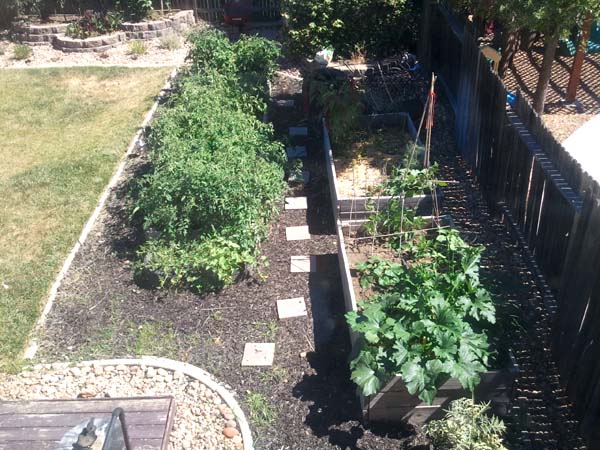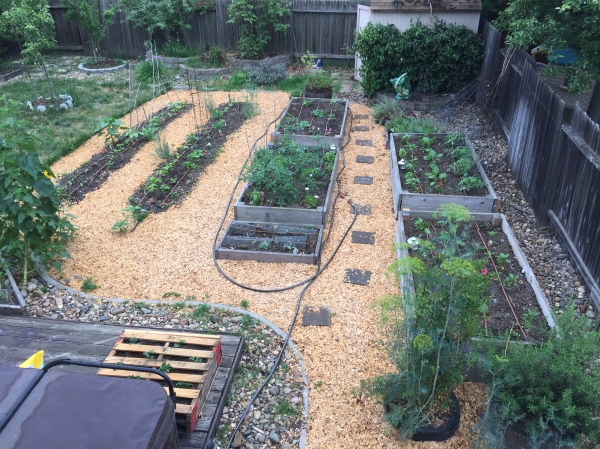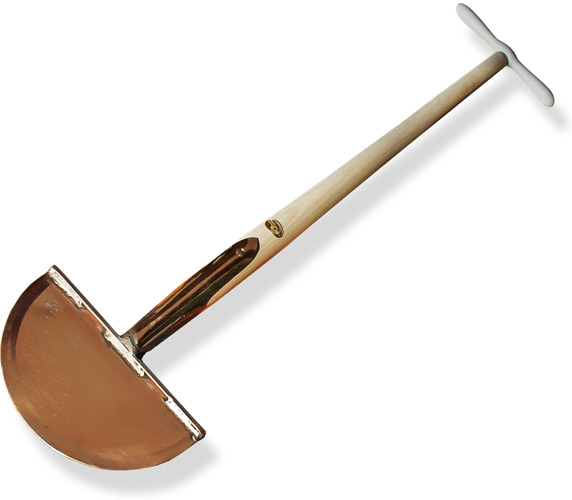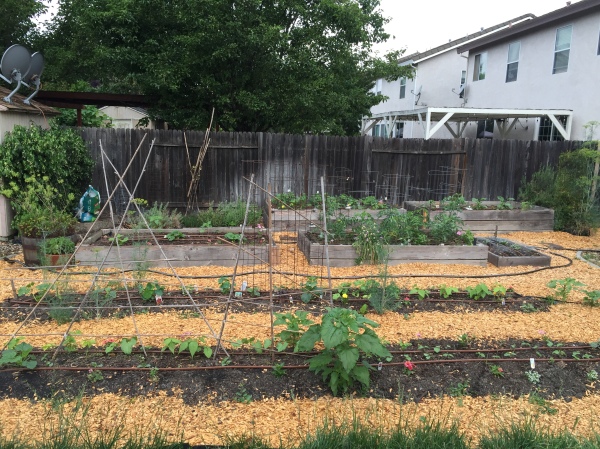People can get pretty creative with how they arrange a garden in a backyard with limited space. Many adopt some variant of square foot gardening, companion gardening, or running vertical pallets along the fence-line. For us? We decided the less lawn the better. And that more plants and produce were a perfectly sound way to decorate the backyard, in lieu of a manicured water-hogging greenery.
Here’s what our garden area looked like before expanding.

Bird’s eye-view of pre-expansion garden.
It took nearly two audio books to cut, pile and discard about 80 square feet of sod, but at least I wasn’t in want of exercise that week. And here’s what it looks like now.

Today’s garden with two tracks added.
Raised garden beds are awesome, but we didn’t want to obstruct the entire view across the backyard by having everything lifted 3 feet off the ground (this all depends on how your backyard is arranged, and where your viewing point is out your window(s)). Therefore, we went with the walking garden, flat off the ground, just like in the good old days. Granted, we imported a lot of soil, added a ton of gypsum, and manually rototilled until we nearly forgot the meaning of life. The new tracks might best be described as mounds, raised off the ground by several inches with heavy compost.
So here’s how we did this.
1.KILLING THE LAWN. If the most time you spend with you lawn is mowing it into tidy, shaven patches that require more water than anything else on your property, then you’re probably best off doing away with it. We didn’t just want more food and more crop diversity, we happen to think a well-kept kale patch is far more attractive than something you’re not even allowed to (and morally shouldn’t) water during drought. I removed the lawn using one of these:
You can rent a machine and do it much faster, but that depends how big your project is, whether you have access to a truck, how much you’re willing to spend, and how much time you’re willing to dedicate. We did it by hand because it was a smaller area, no truck, and I don’t mind getting a good workout. The soil should be semi-soft, so picking the season to remove the lawn matters, unless you want to water it heavily before you start. Step the half-circle of the tool straight down through the lawn, one after the other, until you have a line all the way across the lawn. Then cut another line about 12 inches away so that you’ve cut a strip of lawn. Just imagine that you’re cutting strips of sod out of your lawn. Yank the strip out, grass dirt, and the plastic mesh that’s probably underneath, roll it up, set it aside, and repeat. A minute to master, forever to complete (kidding, but it is tough labor).
2. CULTIVATE THE PLANTING AREA. We chose to form tracks for our garden because we planned on using drip-line irrigation. Even if you’re planning on importing the soil, it’s a good idea to break into the ground to allow for maximum depth and to reach down where the water will remain in the high temperatures. If it’s clay, add gypsum. Again, rototiller machines exist if you’re acquainted with such luxuries. I used a shovel and my shoulders, and probably more of my back that I intended.

We created tracks to allow for simple drip-line irrigation.
Mix good soil in with clay (or whatever you have) and then add a lot more good soil on top. This is one of those things where you might see soil improvement a few growing seasons.
3. MULCH THE PERIMETER. No special advice here. I think you all know how to shovel bark and move it around. Buy it in bulk from a bulk distributor to save money. There, I’ve justified my existence.
How did this work? Well, it worked OK the first year, but not terrific. Our soil is made of hard, impacted clay, but we’ve gradually had more success each season. Some plants break up the soil better than others, like sunflowers, so those would be great additions. Each year we add more organic compost and the conditions get better an better.
Cheers.
-J